Why Your Bank May Freeze Crypto Transactions and How to Respond
Crypto Account Freeze Risk Checker
Select the factors that apply to your recent crypto transactions to estimate the risk level of a potential bank freeze:
Select risk factors above and click "Check My Risk Level" to see your assessment
TL;DR
- U.S. banks can freeze accounts linked to crypto under the 2025 GENIUS Act and new FDIC guidance.
- Freezes are usually triggered by blockchain‑analysis tools that flag high‑risk addresses.
- If your account is frozen, gather transaction records, source‑of‑funds docs, and be ready for a lengthy KYC review.
- Use reputable exchanges, avoid mixing services, and keep a clear paper trail to lower freeze risk.
- Europe’s MiCA regime is softer on banks but still requires AML checks; future laws may narrow the gap.
When a bank blocks your funds because of crypto activity, it’s called a crypto account freeze. In 2025 this practice has become routine, not an exception. Below you’ll learn why regulators tightened the screws, how banks actually spot crypto, what to do if you’re caught, and ways to keep your money flowing.
What the 2025 regulatory wave looks like
GENIUS Act is a federal law passed in June 2025 that creates the first comprehensive U.S. framework for digital assets. It defines a “lawful order” that lets regulators compel banks to freeze, seize, or block the transfer of stablecoins and other crypto‑related payments. The law also ties the freeze to a judicial review process, giving banks a clear legal hook to act on.
At the same time, the FDIC rescinded its restrictive FIL‑16‑2022 guidance and issued new rules allowing its supervised banks to engage in permissible crypto activities-provided they have solid risk‑management controls. The agency’s July2025 joint statement urged banks to implement strong BSA/AML programs, cryptographic key‑management, and third‑party vendor oversight.
Outside the U.S., the European Union’s MiCA regulation (Markets in Crypto‑Assets) sets AML expectations but stops short of giving banks the same enforcement power as the GENIUS Act. That difference explains why U.S. users see more aggressive freezes.
How banks actually detect crypto activity
Modern banks rely on KYT (Know Your Transaction) monitoring systems that scan blockchain data in real time. These tools map every address you touch, flagging links to known darknet markets, sanctioned entities, or mixing services. When a transaction trips a risk threshold, the system automatically generates a freeze flag that the compliance team reviews.
Because the blockchain is public, a single questionable address can pull an entire chain of users into the spotlight. That’s why you might see your account blocked even if you never directly dealt with a high‑risk service-receiving crypto from a friend who bought it on a shady exchange can be enough.
Bank compliance departments also use third‑party crypto‑forensic providers. Those firms maintain watch‑lists that are constantly updated with new illicit addresses. The moment an address appears on a list, any account that receives funds from it gets a compliance alert.
Typical triggers for a freeze
- Incoming transfers from high‑risk wallets. Addresses linked to ransomware or sanctioned countries raise red flags.
- Large volume spikes. Sudden jumps in crypto‑related deposits can look like money‑laundering.
- Use of mixing or tumbling services. These obscure the source of funds and are near‑automatic triggers.
- Repeated failed KYC attempts. If the bank can’t verify who you are, they’ll lock the account until you provide more proof.
- Regulatory “lawful orders.” Under the GENIUS Act, a court or agency can issue a direct freeze order without the bank having to prove wrongdoing.

What to do if your account gets frozen
- Don’t panic. The freeze is a compliance action, not an accusation of a crime.
- Contact the bank’s compliance department. Ask for the specific reason and the documentation they need.
- Gather transaction evidence. Export blockchain explorer screenshots, wallet addresses, and any invoices or contracts that show the legitimate purpose of the transfer.
- Prepare source‑of‑funds paperwork. Bank statements, tax returns, or a letter from a reputable exchange can prove the money’s origin.
- Submit the documents promptly. Banks often hold funds for weeks; the faster you comply, the quicker the release.
- Escalate if needed. If the bank’s response stalls, consider a formal request under the U.S. Freedom of Information Act (FOIA) or seek legal counsel experienced in crypto AML.
Most banks will lift the freeze once they’re satisfied you’re not handling illicit proceeds. However, repeated freezes can lead to account termination, so it’s worth building a preventive strategy.
Best practices to keep your money moving
- Choose regulated exchanges. Platforms that comply with FinCEN and have robust KYC reduce the chance of a tainted inbound address.
- Avoid mixers. Even if you think you’re just preserving privacy, the act alone flags your wallet as high risk.
- Maintain a clear paper trail. Keep receipts, trade confirmations, and tax filings for every crypto transaction.
- Use separate wallets for different activities. A wallet dedicated to personal purchases stays clean, while a “high‑risk” wallet can be isolated.
- Stay updated on watch‑lists. Services like Chainalysis publish regular alerts; checking them before sending or receiving funds helps you steer clear of flagged addresses.
- Consider stablecoins wisely. Under the GENIUS Act, stablecoins have a distinct legal status, but they’re still subject to freeze orders if linked to illicit activity.
U.S. vs. EU: A quick regulatory showdown
| Aspect | United States | European Union |
|---|---|---|
| Legal basis for freezes | GENIUS Act allows direct “lawful orders” to banks. | MiCA mandates AML checks but does not grant banks direct freeze authority. |
| Scope of assets | Stablecoins, tokenized deposits, and most crypto transactions. | All crypto‑assets, with a focus on investor protection. |
| Enforcement agency | FinCEN, OFAC, and Federal Courts via GENIUS. | European Banking Authority (EBA) and national regulators. |
| Typical freeze trigger | KYT alerts tied to sanctioned addresses or court orders. | AML red‑flags from transaction monitoring; fewer court‑issued orders. |
| Remediation timeline | Weeks to months, depending on documentation. | Similar, but less likely to involve judicial review. |
The U.S. environment is more aggressive, which explains why many crypto users in America report unexpected freezes. European users still face scrutiny, but they often have more time to resolve issues before a hard block.
What’s coming next?
Legislators are already drafting follow‑up bills like the CLARITY Act and the CBDC Anti‑Surveillance State Act. Those proposals could tighten reporting requirements for crypto wallets and give regulators even more power to issue freeze orders.
At the same time, large banks such as JPMorgan Chase are launching their own stablecoin projects, which may receive clearer regulatory treatment. The paradox is that institutions gain clarity while retail users face tighter enforcement.
If the trend continues, we’ll likely see two diverging paths: institutional crypto services that operate within the legal sandbox, and an expanding “off‑ramp” of DeFi protocols that stay outside traditional banking altogether. For most everyday users, the safest bet remains to stay on compliant platforms and keep meticulous records.
Frequently Asked Questions
Why did my bank freeze my account after I received crypto?
Banks use KYT monitoring to scan every incoming address. If the address appears on a watch‑list for ransomware, sanctions, or mixing services, the system flags the transaction and the compliance team freezes the account until you provide proof of legitimate source.
Can a freeze be lifted without a court order?
Yes. Most freezes are internal compliance actions. Providing the requested documentation-transaction logs, source‑of‑funds statements, and ID verification-usually convinces the bank to release the funds.
Does the GENIUS Act affect only stablecoins?
While the act was introduced to regulate stablecoins, its language on “lawful orders” extends to most crypto‑related payments, so any digital asset tied to a bank transaction can be subject to a freeze.
How can I tell if an address is on a watch‑list?
Several blockchain‑forensics firms (Chainalysis, CipherTrace, Elliptic) publish public watch‑lists. You can copy the address into their free lookup tools or use wallet extensions that flag risky addresses automatically.
Will Europe adopt the same freeze powers as the U.S.?
Current EU legislation (MiCA) stops short of granting direct freeze authority to banks. Future amendments may tighten powers, but as of 2025 the approach remains less aggressive than the U.S.
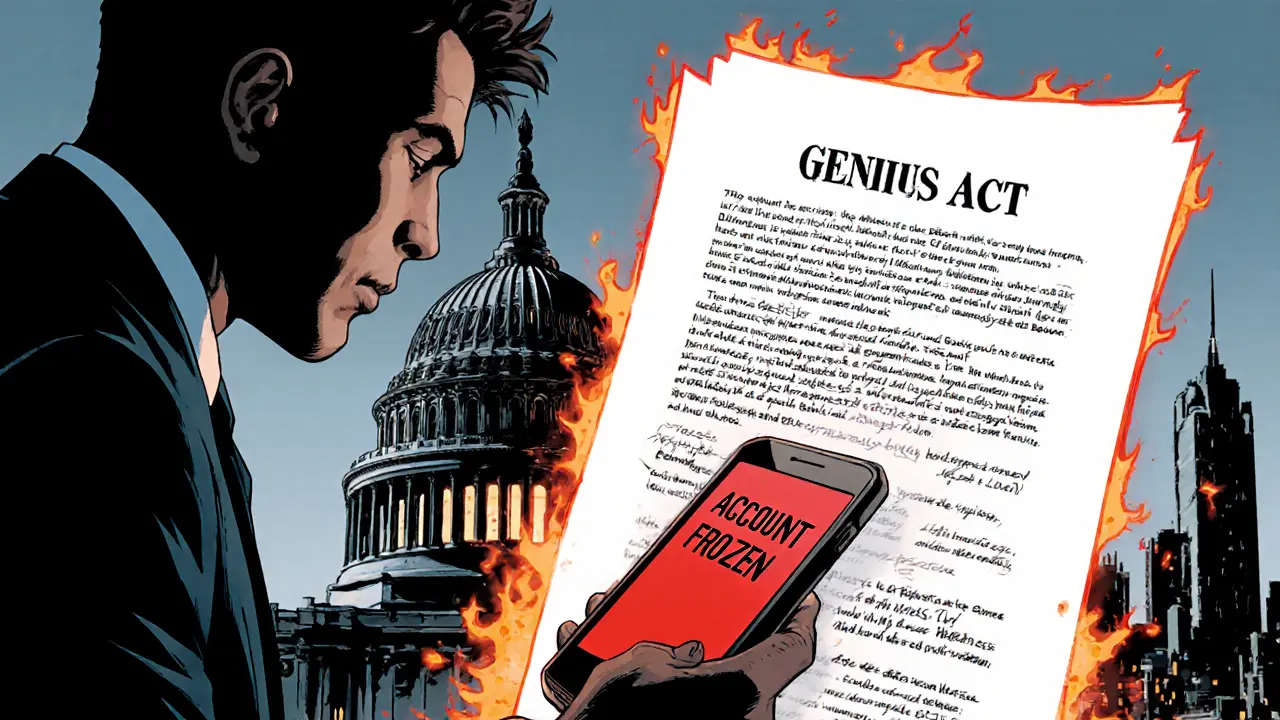
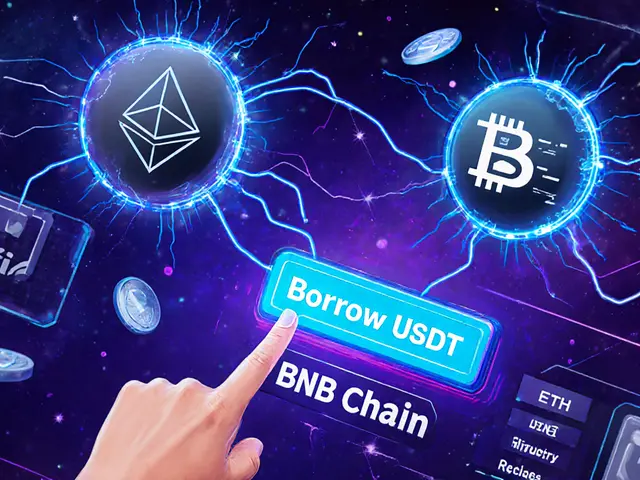
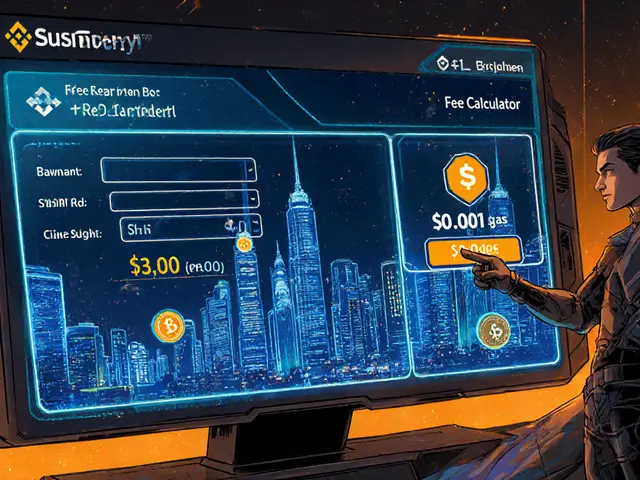

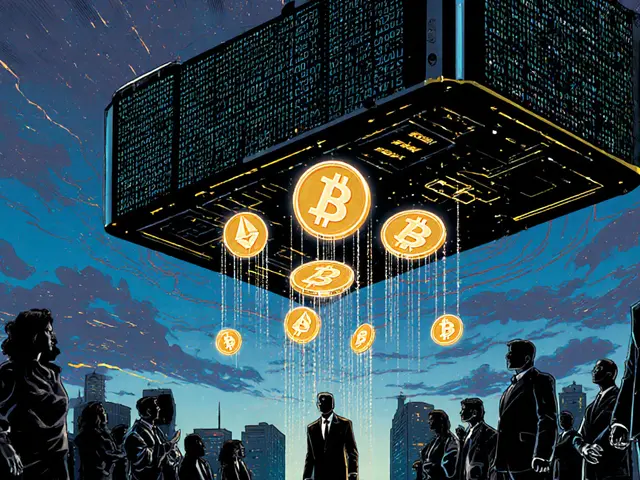
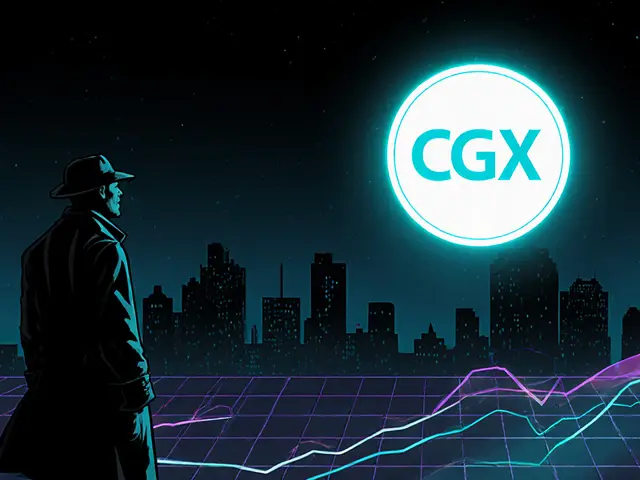
16 Comments
emmanuel omari
October 8 2024Bank freeze actions are nothing short of a wake‑up call for anyone treating crypto like a free‑for‑all. In Nigeria we see the same pattern – regulators slap down any institution that looks like it’s facilitating illicit flows. The GENIUS Act simply gave U.S. banks the legal hammer they needed, and the effect ripples worldwide. If you’re moving money through a non‑regulated exchange, expect the compliance bots to flag you faster than a spam filter. The safest route is to stay on a platform that does KYC and keeps a clean address book.
Andy Cox
October 8 2024Honestly the freeze thing is just banks playing it safe after the new rules came out. They’re scanning blockchains like they used to scan credit cards and any red flag makes them pause. It’s not personal, just a policy shift that makes sense when you think about money‑laundering risks. Keeping records and using legit exchanges is the easiest way to stay out of the fire.
Courtney Winq-Microblading
October 8 2024Imagine a world where every digital coin you touch is under a microscope – that’s the reality we now inhabit. The GENIUS Act turned a theoretical concern into a daily operational burden for banks, forcing them to adopt KYT systems that whisper the history of every wallet. While some see this as a loss of privacy, it also offers a shield for honest users against the shadowy actors lurking on the chain. The paradox is that the more transparent we become, the more we can prove our legitimacy. So, a diligent paper trail isn’t just bureaucracy; it’s the passport to financial freedom in a regulated era.
Jayne McCann
October 8 2024Freezes feel heavy handed, but the banks are just following the law. If you don’t want your money locked up, stop using mixers and shady addresses.
Richard Herman
October 8 2024Practical tip: keep a separate “clean” wallet for everyday purchases and a dedicated one for higher‑risk activities. That way, if a watch‑list flag hits, only the risky wallet gets tangled. Also, regularly export your transaction history from the exchange – a CSV file is easier to paste into an email than a screenshot. When you’re asked for source‑of‑funds documents, a concise one‑page summary with links to the blockchain explorer can shave days off the review. And remember, a polite tone with the compliance team often smooths the process more than a confrontational email.
Stefano Benny
October 8 2024From a tech‑stack perspective, banks are now feeding real‑time blockchain data into their AML suites. The integration layer pulls address metadata, checks it against Chainalysis and Elliptic watch‑lists, and then applies a risk score algorithm. When that score breaches a threshold, an automatic freeze flag is raised 🚨. It’s essentially the same logic you see in fraud detection for credit cards, only the data source is a public ledger. The upside is you get a transparent audit trail; the downside is you lose the “off‑grid” vibe you might have been chasing. If you want to stay under the radar, the only viable path is to use regulated on‑ramps that already do the heavy lifting.
John Kinh
October 8 2024This whole freeze saga feels overblown.
Nathan Blades
October 8 2024When a bank decides to freeze your crypto‑related account, the first thing you should do is breathe and recognize that you’re in the compliance loop, not a criminal courtroom. The freeze is triggered by an algorithm that scans every incoming address against a massive watch‑list curated by third‑party forensics firms; a single tick can send a red flag soaring. Your immediate response should be to contact the compliance department and request the exact reason – they’ll usually cite a specific address or a volume spike. Then, gather every piece of documentation you can: blockchain explorer screenshots, transaction IDs, invoices, contracts, and tax filings that prove the money’s legitimate origin. Next, compile a concise source‑of‑funds packet; a one‑page summary with clear headings beats a 20‑page novel. Submit the packet promptly; most banks operate on a “review within 30 days” policy, but the faster you move, the quicker the release. If the bank stalls, you can invoke the Freedom of Information Act to force disclosure of the internal freeze justification. Meanwhile, keep your other accounts active – avoid using the frozen account for everyday expenses. In the longer term, adopt a strategy of separation: use a regulated exchange for large moves and keep a personal wallet for low‑risk transactions. Regularly check your addresses against public watch‑lists from Chainalysis or CipherTrace; a quick lookup can save you weeks of hassle. Remember that the GENIUS Act gives regulators direct “lawful order” authority, so once a freeze is issued, the bank doesn’t need to prove wrongdoing, they only need to verify compliance. Finally, stay updated on legislative changes; proposals like the CLARITY Act could tighten reporting requirements further, meaning today’s best practices might become tomorrow’s baseline. By staying organized, keeping records, and using reputable services, you turn a potentially crippling freeze into a manageable compliance checkpoint.
MARLIN RIVERA
October 8 2024The whole system is a paranoid over‑reach that punishes honest users while letting the big players slip by. Banks act like gatekeepers of a medieval kingdom, demanding proof for every transaction you make. If you’re not willing to jump through endless hoops, you might as well abandon crypto altogether.
Debby Haime
October 9 2024Great rundown! You’ve captured the essential steps without drowning the reader in legalese. Adding a quick checklist at the end could make the advice even more actionable for folks who are new to compliance.
katie littlewood
October 9 2024I love how you laid out the whole process in a narrative that feels like a step‑by‑step guide. One thing I’d add is a reminder to keep backups of all the PDFs you submit – banks sometimes ask for the same document twice. Also, a short note on how to request a status update without sounding pushy would round out the piece nicely.
Jenae Lawler
October 9 2024While the exposition is thorough, the prose occasionally lapses into a colloquial register that detracts from the gravitas of the subject. A more consistent formal tone would better align with the regulatory gravity of the GENIUS Act and its attendant jurisprudence.
Chad Fraser
October 9 2024Exactly, and for anyone feeling overwhelmed, remember that most banks appreciate clear, concise communication. A short email titled “Crypto Freeze – Source of Funds Documentation” with bullet points often gets faster replies than a long narrative.
Parker Dixon
October 9 2024👍 Spot on! Adding a quick emoji‑checklist can even help users remember what to gather: 📄 transaction logs, 🧾 invoices, 📊 tax forms. Keeps it visual and less boring.
Bobby Ferew
October 9 2024Honestly, if the banks were any more over‑protective, they'd start asking for a blood sample before letting us trade a single satoshi. It's ridiculous how much paperwork is demanded for something that, technically, is just a line of code moving from point A to B.
celester Johnson
October 9 2024One could argue that the perpetual tension between financial freedom and regulatory oversight is the modern rendition of the age‑old dialectic between liberty and order. When the scales tip too far toward surveillance, we risk stifling the very innovation that the law seeks to regulate. Thus, a balanced approach, informed by both technological nuance and ethical stewardship, is essential.